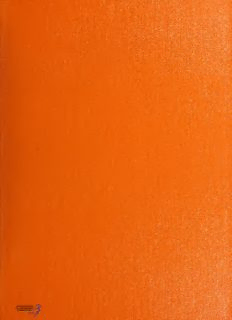
RF attenuation measurement system using a SQUID PDF
Preview RF attenuation measurement system using a SQUID
NBSIR 77-863 RF ATTENUATION MEASUREMENT SYSTEM USING A SQUID Robert T. Adair Nolan V. Frederick Donald B. Sullivan Electromagnetics Division and Cryogenics Division Institute for Basic Standards National Bureau of Standards Boulder, Colorado 80302 September 1977 Prepared for Army/Navy/Air Force Calibration Coordination Group NBSIR 77-863 RF ATTENUATION MEASUREMENT SYSTEM USING A SQUID Robert T. Adair Nolan V. Frederick Donald B. Sullivan Electromagnetics Division and Cryogenics Division Institute for Basic Standards National Bureau of Standards Boulder, Colorado 80302 September 1977 Prepared for : Army /Navy /Air Force Calibration Coordination Group U.S. DEPARTMENT OF COMMERCE, Juanita M. Kreps, Secretary Sidney Harman, Under Secretary Jordan J. Baruch, Assistant Secretary for Science and Technology NATIONAL BUREAU OF STANDARDS, Ernest Ambler, Acting Director IMPORTANT NOTICE Certain commercial equipment is identified in this report. This identification does not imply endorsement by the National Bureau of Standards nor does it imply that the equipment identified is necessarily the best available for the purpose. CONTENTS Page 1. GENERAL INFOR>IATION 1-1 1.1 Introduction 1-1 1.2 Specifications 1-2 1.3 Description 1-3 1.3.1 Description of SQUID Control Unit 1-6 1.3.2 Description of SQUID Readout Unit 1-7 1.3.3 Description of the SQUID Signal Processing Circuits 1-26 1.3.3.1 The 1-GHz Biasing Circuit 1-26 1.3.3.2 The 1-kHz Zero Detecting Circuits 1-33 1.3.3.3 The 2-kKz Phase Sensitive Detector Circuits 1-33 1.3.3.4 The Counter-Pulse Generating Circuits 1-33 1.3.4 Description of the SQUID 1-34 1.3.5 Description of the Cryogenic Vessel 1-42 2. THEORY OF OPERATION 2-1 2.1 General Information 2-1 2.2 Principle of SQUID Operation 2-1 2.3 Detailed Analysis of SQUID Operation Theory 2-4 2.4 Theory of the SQUID Measurement Process 2-8 2.5 Attenuation Measurements Using the SQUID System 2-9 2.6 Bessel Function Zero (Null) Counting Techniques 2-12 3. OPERATING PROCEDLUE 3-1 3.1 General 3-1 3.2 System Components 3-1 3.3 Connectors, Controls, and Indicators 3-1 3.4 Preparation for Use 3-10 3.5 Preliminary Setup and Adjustments 3-12 3.6 Operating Procedure 3-13 3.6.1 Introduction 3-13 3.6.2 Calibration of a Variable Attenuator 3-13 3.6.3 Calibration of a Fixed Attenuator 3-15 3.6.4 Reduction of Calibration Data 3-15 3.7 Data Reduction 3-15 3.7.1 Data Reduction Using a Table of Bessel Functions 3-15 3.7.2 Data Reduction Using Calculated Bessel Function Values 3-25 3.7.3 Data Reduction Using a Programjnable Calculator 3-26 iii CONTENTS (Continued) 4. ERROR ANALYSIS OF THE SYSTEM 4-1 4.1 General Information 4-1 4.2 Systematic Errors 4-1 — 4.2.1 Harmonic Distortion 4-1 4.2.2 Phase Sensitive Detector Errors 4-3 4.2.3 Null Meter Offset • 4-4 4.2.4 RF Leakage 4-6 4.2.5 External rf Noise 4-6 i' ' 4.2.6 SQUID Control and Readout Units 4-8 — 4.3 Random Errors • 4-8 4.3.1 The Device Under Test (DUT) 4-8 4.3.2 SQUID Control and Readout Units 4-9 4.3.2.1 RF Source and Amplifier 4-9 4.3.2.2 Coaxial Switch (Set-Run relay in rf signal path) 4-9 4.3.3 Phase-Sensitive Null Detector 4-9 4.3.4 RF Leakage— 4-9 4.3.5 Noise 4-9 — 4.4 Total System Uncertainty 4-10 5. CONCLUSIONS 5-1 6. ACKNOWLEDGMENTS 6-1 7. REFERENCES 7-1 8. COMPONENT INFORMATION • 8-1 9. APPENDIX A. FREQUENCY SPECTRUM FROM THE SQUID 9-1 10. APPENDIX B. CIRCUIT DIAGRAMS AND COMPONENT DETAILS 10-1 11. APPENDIX C. SYSTEM OPERATION AT OTHER FREQUENCIES 11-1 . Iv
Description: